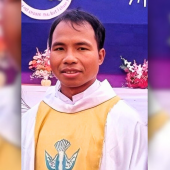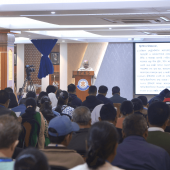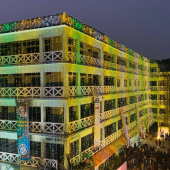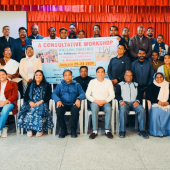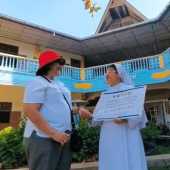Caritas Bangladesh provides aid to survivors of cyclone Sitrang
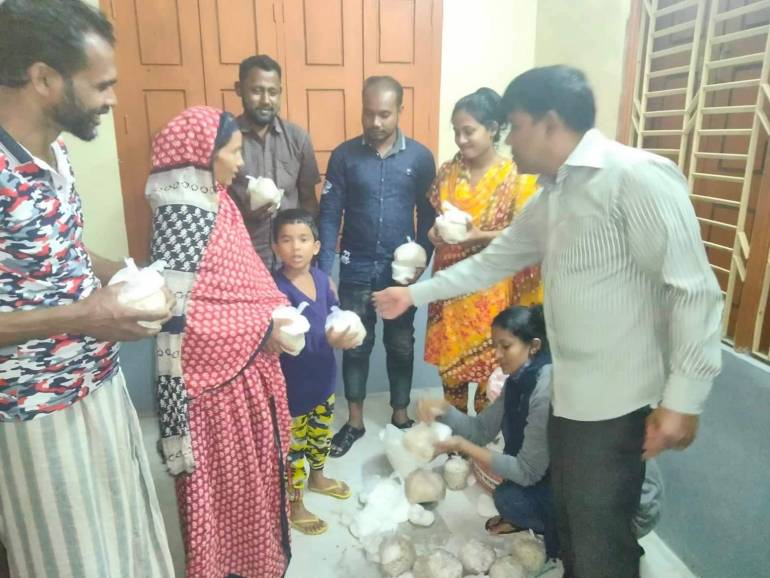
Caritas Bangladesh, the social action arm of the Catholic Church, distributed food aid to thousands of people who were affected by cyclone Sitrang in the country.
Cyclone Sitrang was a tropical cyclone that made landfall in India and Bangladesh on October 24–25. It was Bangladesh's first cyclone since Cyclone Mora in 2017.
The church aid organization provided support to areas in Barisal, Chittagong, and Khulna regions, which were most affected by the natural disaster cyclone on October 24.
According to the Bangladesh Meteorological Reports, this year’s cyclone winds speeds of about 90 kilometers per hour slammed into Bangladesh and impacted 13 districts in the southern coastal region.
Caritas Bangladesh and the government aid agencies have rushed to assist cyclone victims and assess the damaged areas after cyclone Sitrang.
Reports say that during the hit by cyclone Sitrang, at least 35 died and thousands of people were affected. People now need food, shelter, medicine, and hygiene kits, among others.
The social action arm of the Catholic Church said its three regional offices covering southern Bangladesh have rushed to help victims after the cyclone.
Daud Jibon Das, regional director of Caritas in Khulna, said the cyclone Sitrang destroyed thousands of houses, affected agriculture, fisheries, and livestock, and some of the Christian-majority region.
"The weather was bad with heavy rain, there was no electricity and no road communication, bringing suffering to the poor," he said.
"Caritas Khulna was able to provide emergency support to around 15,000 people to cyclone centers and distribute dry food to over 1,000 people," said Das.
This cyclone badly hit the coastal districts of Satkhira, Khulna, Jashore, Bagerhat, Patuakhali, Barguna, and Bhola.
The Disaster Management Ministry reported that 35 people were killed, including 10 women and four children. The deaths occurred from the collapse of houses and trees and drowning.
During a press conference on October 25, the State Minister for Disaster Management and Relief, Enamur Rahman, said the government was assessing the damage and had already allocated funds to help affected people.
"Instructions were given to protect cattle and food. In addition to allocating US$ 4,903,12 to each district, adequate provision of dry food has been made," he said.
Ronjit Halder, a Catholic from the Mongla area in Bagerhat, said, "I invested a lot of money for my fish farming project in the pond and I took a loan from the bank, but everything is gone by the cyclone and I have already lost my invested fish project."
"My mind is scarred now; I do not know what I will do or how I will pay my bank loan. If I get any support from Caritas or our government, I may be able to recover; otherwise, our family will struggle," he said.
According to the Department of Agricultural Extension, the cyclone damaged about 11% of the crop in the 13 affected districts. In the Khulna region, some 191,600 hectares of fish farms were washed away.
Caritas Khulna Region has taken initiatives to provide dry food support for sheltered people in Dacope, Assasuni, and Shyamnagor Upazila (subdivision).
The 1970 Bhola cyclone, one of the world's worst natural disasters, killed several hundred thousand people in Bangladesh, then known as East Pakistan and India.
Last year, more than a million people were evacuated along India's east coast before cyclone "Yaas" battered the area with winds gusting up to 155 kilometers an hour, equivalent to a Category 2 hurricane.
In recent years, better forecasting and more effective evacuation planning have dramatically reduced the death toll from such storms. - Nikhil Gomes
Radio Veritas Asia (RVA), a media platform of the Catholic Church, aims to share Christ. RVA started in 1969 as a continental Catholic radio station to serve Asian countries in their respective local language, thus earning the tag “the Voice of Asian Christianity.” Responding to the emerging context, RVA embraced media platforms to connect with the global Asian audience via its 21 language websites and various social media platforms.









